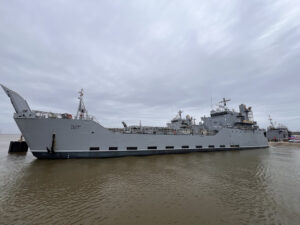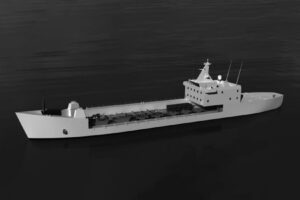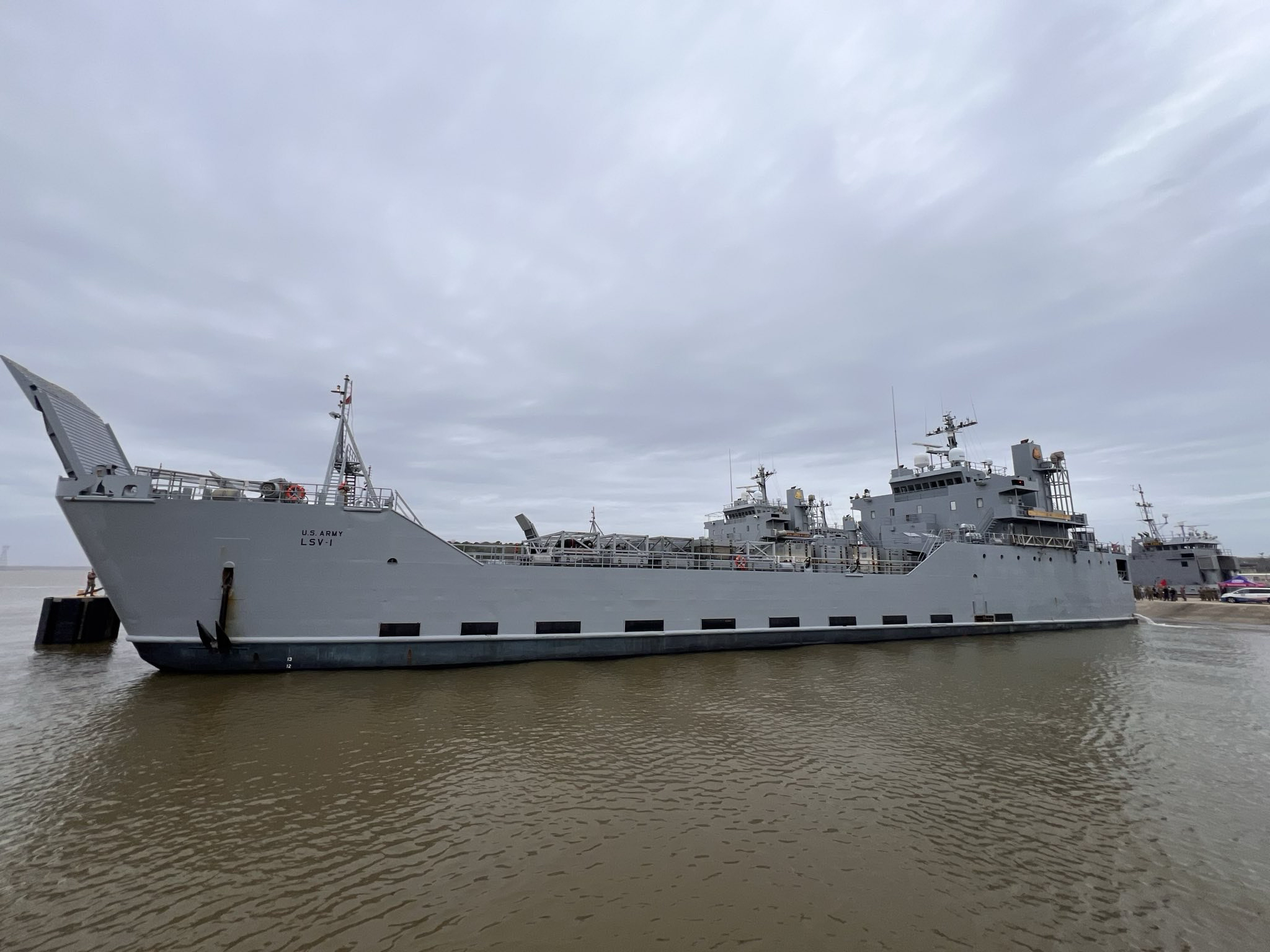A Marine Corps unit that the Pentagon plans to ultimately deploy with the Landing Ship Medium (LSM) confirmed to reporters it has tested with an Army watercraft set to be the base design for the first revised LSM.
In the past two years while Lt. Col. Kevin Wheeler, logistics officer for the 3rd Marine Littoral Regiment (MLR), has been with the unit, “we’ve done extensive work with U.S. Army and Theater Sustainment Command. They employ Besson-class Logistics Support Vessels. They also employ Landing Craft Utility-2000 and all of our exercises that happen on the Big Island of Hawaii incorporate some level of watercraft transport with the U.S. Army, and that includes the logistics support vessel, the Besson-class and the Kuroda-class,” Wheeler told reporters during a media call on June 9.

In April, the Navy posted a pre-solicitation notice that it intends to issue Bollinger Shipyards Lockport LLC a sole-source contract for the first Landing Ship Medium (LSM) based on the non-developmental Israeli Logistics Support Vessel (ILSV) design. ILSV itself is based on the U.S. Army’s Frank S. Besson-class of logistics support vessels.
The Kuroda-class is a 42-foot-longer sub-variant of the Besson-class vessels.
This follows Navy acquisition officials last December confirming they pulled the previous LSM RFP due to industry bids being higher than expected and what the service was interested in (Defense Daily, Dec. 19, 2024).
The Government Accountability Office’s latest annual weapons systems assessment report noted industry’s offers on LSM were “hundreds of millions of dollars higher than budgeted” while Congress required the Navy to certify the vessel’s basic and functional design were complete before entering into a construction contract.
“The program determined that this legislation precluded it from negotiating about the cost drivers in the offers and from making the planned award, which combined design and construction,” the report said.
During the April Modern Day Marine conference in late April, Navy and Marine Corps officials added that requirements creep on the LSM pushed it into unaffordability, so they pushed this reset button. Lt. Gen. Eric Austin, Deputy Commandant, Combat Development and Integration, said they were now in a good place and “we are well postured to procure our first non-developmental item” (Defense Daily, April 30).
He said the services expect the first LSM to take four to five years to go from contract award to in the water and delivery, which will only serve as a Block 1 model. Follow-on vessels are expected to take lessons learned from using that, dubbed Block Next.

The Marine Corps hoped to ultimately field 35 LSM-type ships to transport the MLRs, but it settled on starting with 18 vessels, with the remaining potentially to be versions of the current Littoral Maneuver Bridging Solutions (LMBS) vessels. The LMBS includes the Spearhead-class expeditionary fast transport ship and a leased Offshore Support Vessel serving as a Stern Landing Vessel (LSM) to test LSM concepts.
Since restarting LSM, the Navy is using a provision in the FY 2025 defense authorization act that exempted it using full and open competition for the lead LSM if it chooses a commercial or non-developmental design, like the ILSV (Defense Daily, July 11, 2024).
Wheeler confirmed 3rd MLR trained with the Besson-class in January in Hawaii as they prepared for the recent Balikatan and KAMANDAG exercise in the Philippines.
He noted the regiment looks for every opportunity to train with and practice using those types of vessels and “we look forward to more opportunities to do that in the future.”
Col. John Lehane, commanding officer of 3rd MLR, said the regiment had a deliberate workup in Hawaii from December 2024 that continued into the new year to make sure they were combat credible before being deployed for the exercises in the Philippines.
“Shortly after the new year, we started a nearly 50-day exercise that culminated in a Marine Corps Combat Readiness evaluation…and there was a very substantive portion of that exercise to complement live force employment, to simulate things in the joint force that’d be really, really expensive to do all live. So that was a lot of aviation simulation. It was a lot of simulation of ships at sea. It was a simulation of an adversary kind of maneuvering against us in the Hawaiian archipelago. That was a great example of being able to do virtual and constructive [training] to complement a very robust set of live fire and maneuver exercises that went on across the Hawaiian archipelago as part of that exercise.”
